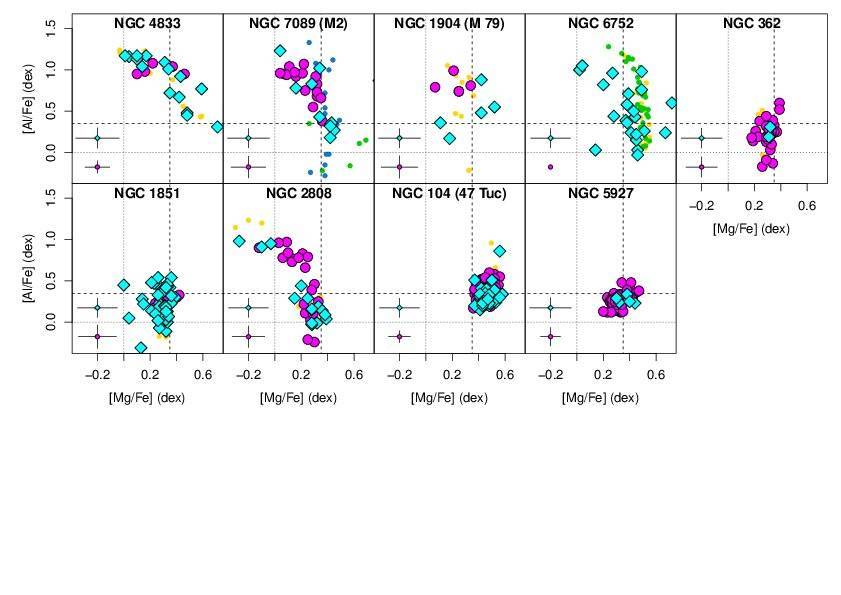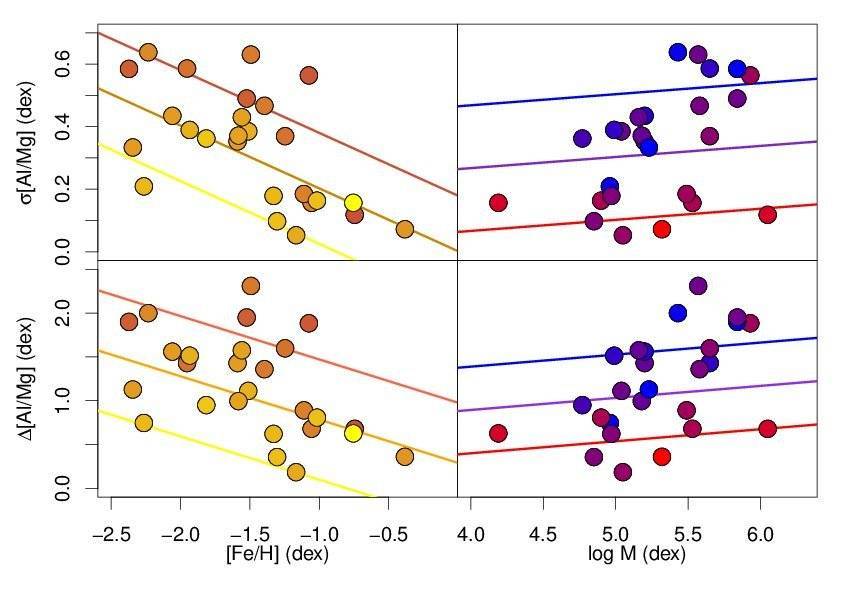The globular cluster anti-correlation as seen by the Gaia-ESO Survey
A group of researchers led by Elena Pancino part of the Gaia-ESO Survey consortium, have recently published on A&A a work (Pancino et al. 2017) based on the fourth internal release (iDR4) data on globular clusters (GCs). Their work was a science demonstration case of the quality of the derived atmospheric parameters and abundance ratios for relatively metal-poor stars. They also present for the first time data for NGC 5927, which is one of the most metal-rich globular clusters studied in the literature so far, with [Fe/H]=−0.39±0.04 dex; this cluster was included to connect with the open cluster regime in the Gaia-ESO Survey internal calibration.
Elena Pancino and her collaborators have studied the shape of the Mg-Al anti-correlation, which is extremely important for understanding the still unexplained multiple population phenomenon in globular clusters (see Figure 1).
The anti-correlation is thought to be produced by the hotter reactions in the CNO hydrogen burning cycle, that require at least 80 million degrees to operate and therefore cannot be produced within the low-mass stars we observe today.
They thus studied the dependency of the Mg-Al anti-correlation extension with metallicity, present-day mass, and age of the clusters, using Gaia-ESO data in combination with a large set of homogenized literature measurements. They found a dependency with both metallicity and mass, which is evident when fitting for the two parameters simultaneously (see Figure 2), but we did not find significant dependency with age. They confirm that the Mg-Al anti-correlation is not seen in all clusters, but disappears for the less massive or most metal-rich clusters.

Figure 1: The Mg-Al anticorrelation in Galactic globular clusters observed by the Gaia-ESO survey. Each panel represents one of the GCs in iDR4 dataset, with large cyan symbols representing UVES high-resolution measurements, and large magenta ones representing GIRAFFE medium resolution ones. The smaller symbols in the background represent previous literature measurements. The GCs are sorted by metallicity, with NGC 4833 at [Fe/H]=-1.92~dex and NGC 5927 at [Fe/H]=-0.39 dex: it appears clearly that higher metallic.

Figure 2: Behaviour of the extent of the Mg-Al anticorrelation in GCs as a function of mass and metallicity. The extent is represented by two indicators: the standard deviation σ[Al/Ma] and the maximum variation Δ[Fe/H]. Points are coloured with mass in the left panels (yellow is less massive and orange more massive) and with metallicity in the right panels (blue is less metal-rich and red is more metal-rich). As can be seen, the Mg-Al anticorrelation extension changes with the mass and the metallicity of GCs, to the point of disappearing for the less massive and/or more metal-rich GCs.
Thanks to the wide variety of checks and applications done by the group of Elena Pancino on globular clusters, we can firmly conclude that Gaia-ESO iDR4 data already meet the requirements set by the main survey goals and that they can be also used to the metal poor stellar populations, including a detailed study of globular clusters.
References:
The Gaia-ESO Survey. Mg-Al anti-correlation in iDR4 globular clusters, Pancino, E.; Romano, D.; Tang, B.; Tautvaišienė, G.; Casey, A. R.; Gruyters, P.; Geisler, D.; San Roman, I.; Randich, S.; Alfaro, E. J, et al., 2017, A&A, 601, 112



